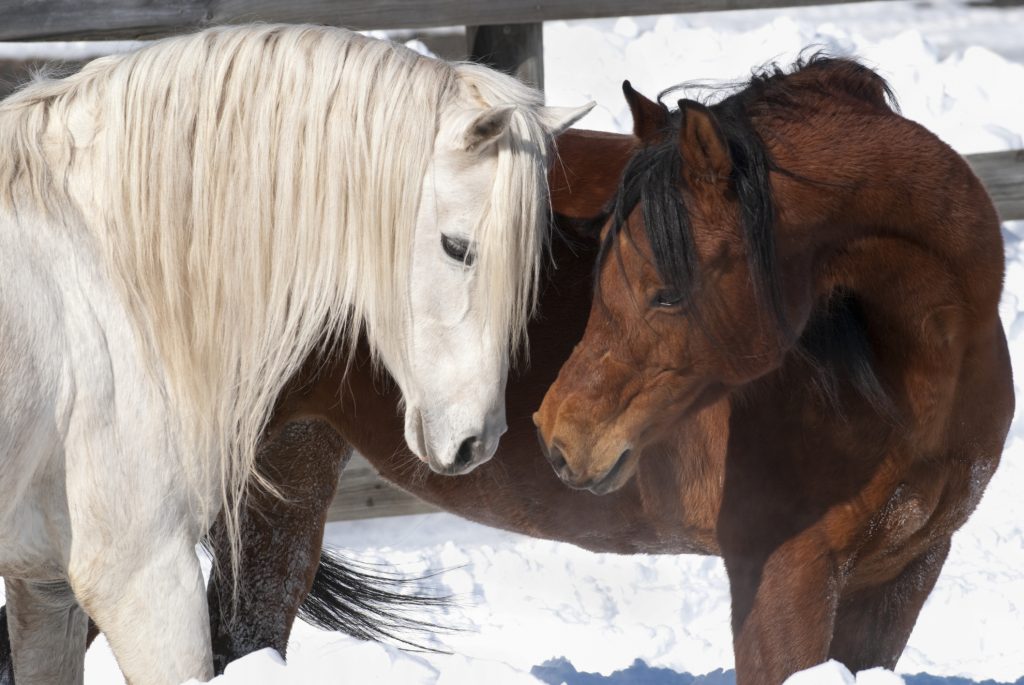You have scored in the orange zone. Caution; consider improvement.
Expand to view Feedback
23) Are caretakers trained in infection control practices (i.e., what to do if a horse is sick, hygiene between horses or groups of horses)?
When a horse on your facility becomes sick, be sure your staff knows to notify you immediately. Promptly contact your veterinarian to get advice on how to reduce the risk of disease spread. Seek their assistance in determining the cause of disease. To reduce the risk of spread of contagious disease, tend to the healthy horses first and the isolated sick horse last. Better yet, have a person dedicated solely to the care of the sick horse. After working with the sick horse, make sure you properly clean or disinfect your hands, footwear, and clothes. Keep a designated set of food and water containers that are only used with the sick horse. Do not share any equipment between the sick and healthy horses.
24) Is there a way for those contacting the horses to perform hand sanitization?
Functional and available sinks are an important part of hand sanitization. It is especially important for people to clean their hands between groups of horses, or after contact with a sick horse or after contact with horses or their manure/bedding. Some pathogens that affect horses may also make humans sick. Hands should be washed with soap and warm water or have an alcohol sanitizer applied to them if sinks are not available. Liquid soap is preferred as bar soaps can actually harbor some pathogens – particularly if they become soiled with organic debris. The soap bar itself can then act as a means of indirect transmission of pathogens from one person’s hands to another’s. Hand drying is an important part of the hand washing process and should not be completed. Re-use of cloth towels by more than one person can act as a means of indirect transmission of pathogens from one person to another. It is ideal if disposable paper towels or forced air dispenser hand drier are used.
25) Is there sharing of equipment between horses (i.e., blankets, brushes, tack, feed buckets)?
Pathogens can be transmitted indirectly from one horse to another through shared equipment like shared tack and grooming tools and wipe cloths.
26) Do horses share a common water source (tank/automatic waters/re-used buckets), even if housed separately?
Water buckets can be a means of indirect transmission of pathogens between horses, just like blankets and brushes. A common water trough (shared by horses) represents the same kind of risk. The more horses using the same source of water, especially constantly changing herds, increases the risk of disease transmission. Cleaning and disinfecting the common water trough between different horses, reduces risk of disease. Ideally, indoors, each horse should have their own designated water bucket.
27) In a situation either at home or away, and hoses are used to water horses, are they submerged into the bucket?
When water buckets are filled, the hose should not touch the bucket, as this can spread disease.
28) How is manure/bedding disposed of?
Manure should be removed from horse areas in to decrease the risk of transmission of infectious agents (pathogens) and to reduce insect activity. It is best to haul manure off the property to eliminate risk for pathogen transmission and reduce insect activity. If removal from the premises is not an option then manure can be composted to reduce pathogen load. Horses should not have access to the manure compost pile. If done correctly, composting can reduce fly breeding sites as well as kill parasites and pathogenic agents found in manure.
29) Is there a protocol for how horse areas (i.e., stalls, trailers, paddocks) are cleaned and disinfected?
Written protocols for disease prevention are the best way to ensure that everyone who has contact with horses is aware of the required procedures, and these protocols provide a reference in case anyone forgets or is unsure of what is expected. Protocols also allow you to share with your veterinarian what is being done for disease prevention, so modifications can be made based on possible disease occurrence, and the effectiveness of your protocols can be measured. Written protocols are most important on larger facilities, where multiple people may be performing horse and property care.
30) Is disinfectant used as part of the protocol to sanitize areas (i.e., stalls/trailers) when dealing with sick and/or new horses?
It is important to have a disinfectant (with written instructions) available when needed for sick or new horses. Make sure to clean your stall/trailer as often as possible between uses. That way any bacteria or viral agents that are on the surface are removed or inactivated (killed). This makes the stall/trailer safe before it is used in the future. It is best to clean out any bedding, wash surfaces with soap and water and then use a disinfectant on the walls and floor. Cleaning and disinfection of equipment such as buckets, tie straps, and feeders in the trailer is also important. This is to make sure all possible pathogenic agents are removed or inactivated (killed). Be certain to follow all label direction on products used to clean and disinfect the stall/trailer. (Cleaning & Disinfecting, co-sponsored by the EDCC and USEF (video))










